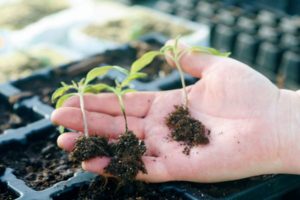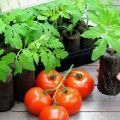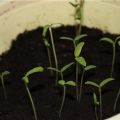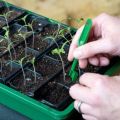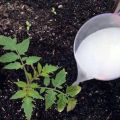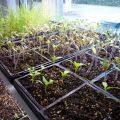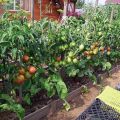How to plant and grow tomato seedlings in peat pots
To get seedlings of young tomatoes, peat cups are used. A variety of shapes and volumes allows you to grow any vegetable crop in them. A high-quality shell does not get wet, does not deform, and the root system of the seedlings is less susceptible to injury during transplantation.
Choosing the best option
The composition of the cups includes:
- high-moor peat - 70%;
- wood pulp - 30%.
The proportions should not be violated, otherwise the tomato seedlings in peat cups will not develop fully. On the packaging, the manufacturer indicates the presence of possible stimulants and additives. Peat is an environmentally friendly material that does not contain pathogens and toxic substances.
The loose structure of peat cups promotes free air penetration to the roots of tomato seedlings. Pay attention to the thickness of the walls (no more than 1.5 mm), such cups take about 30 days to decompose.
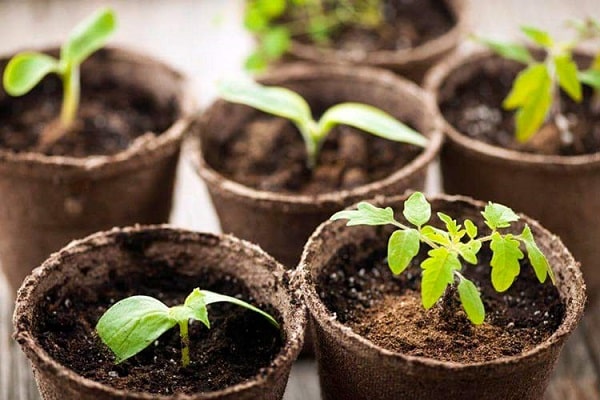
Even a quality product has disadvantages:
- The likelihood of hypothermia of the roots and the development of a fungus. Constant evaporation from the surface reduces the temperature of the soil.
- The walls of the container sometimes become an “impenetrable” barrier. The tomato seedlings obtained in this way may lag slightly in development.
- Peat is an oxidizing agent of the soil, such an environment prevents the assimilation of potassium, which is necessary for the growth of stems.
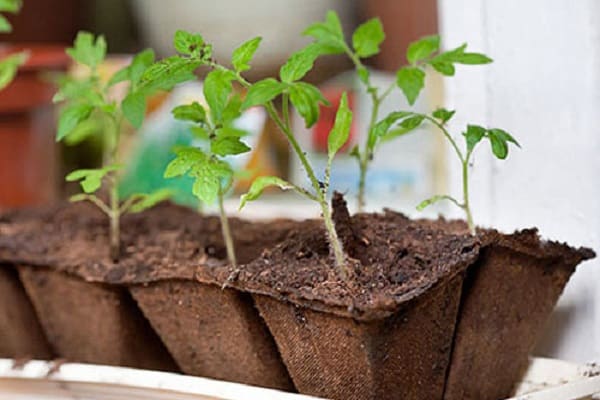
Preparation of soil and planting material
To make the shell quicker to rewind underground, the container is impregnated with liquid mineral fertilizers, the walls can be additionally treated with foundation. It is best to sow the seeds dry to prevent mold. If there are doubts as to the quality of the material, then it is etched with diluted manganese or fungicide. Seeds can be germinated in soil extract. For this:

- The earth is flooded with water.
- Allow to settle for several hours.
- Soak tomato seeds before sprouts appear.
A mixture for tomato seedlings in peat pots is prepared nutritious, any baking powder is added: vermiculite, coarse sand, sawdust. Connect the sod land with humus (1: 1). Pots can be filled with coconut substrate - for young tomatoes this is a good source of nutrients. The soil, before sowing, is disinfected, kept in an oven or spilled with boiling water with potassium permanganate.

Planting agricultural technology
Growing tomato seedlings in peat cups lasts 55-60 days. Tomatoes for seedlings are sown according to the lunar calendar, choosing favorable days from January to March. The exact timing depends on the variety.
For planting tomato seeds, the smallest pressed peat blocks or common containers are suitable.On the surface of the soil, grooves are made no more than 1.5 cm deep, sown one at a time, sometimes 2-3 pieces. Sprinkle on top with earth or vermiculite, then sprinkle tomato seeds from a spray bottle.

Germination temperature + 20 ... + 25 ° C. With this mode, tomato seeds will hatch in 5-6 days, if you increase the degrees to +30 ° C, then green "loops" will appear in 2-3 days. With mass shoots, the daytime temperature is lowered to + 20 ... + 22 ° C, night temperature to +16 ° C. This is necessary for the normal growth of seedlings. Negative factors during this period:
- too hot, not ventilated room;
- lack of light (less than 12-15 hours);
- drafts.
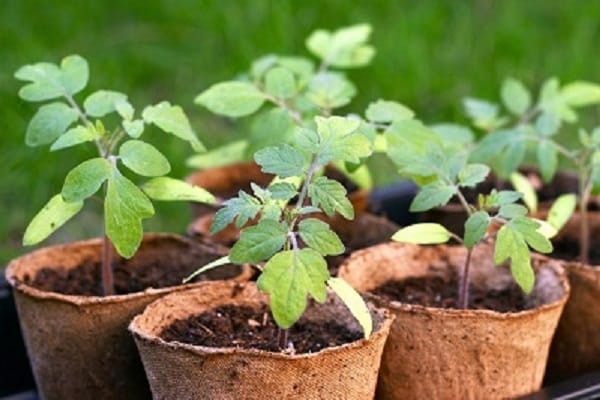
With a lack of lighting, an excess of fertilizers and thickening, tomato seedlings in pots are pulled out of peat, the stems become thinner. The situation can be corrected by a dive, or by filling up the soil. Too dense planting is thinned out.
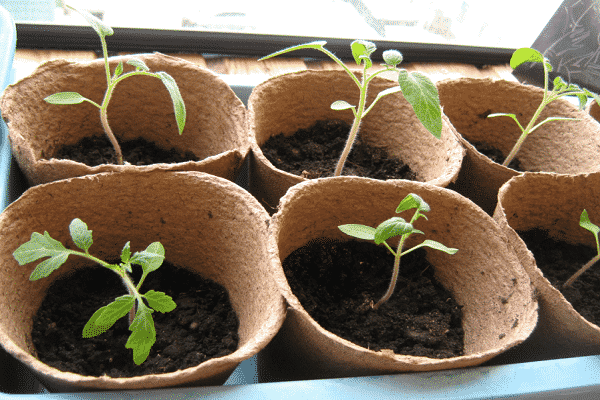
Seedling picking
Tomato seedlings dive into peat pots after the first pair of leaves appears. The tap root is pinched by 1/3, which stimulates the appearance of small suction roots. The temperature of the content is increased by 2-3 degrees. When the seedlings take root, they return to their previous regimes. In the early days, they are protected from direct sunlight and drafts.
Sometimes they practice such growing tomato seedlings in peat pots: they dive into one container at once several pieces. The stems are tightly (for accretion) pulled together with a thread. After the tip of the weaker one is removed, the result is one strong trunk with a powerful "double" root system.
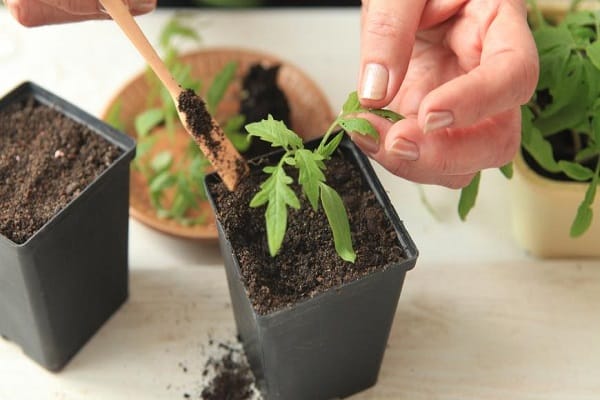
Possible diseases during this period:
- Yellow lower leaves - a symptom of a lack of nutrients (nitrogen), light or beginning with a "black leg", brown spot.
- Decay of stems, the appearance of mold - overflow or infectious diseases.
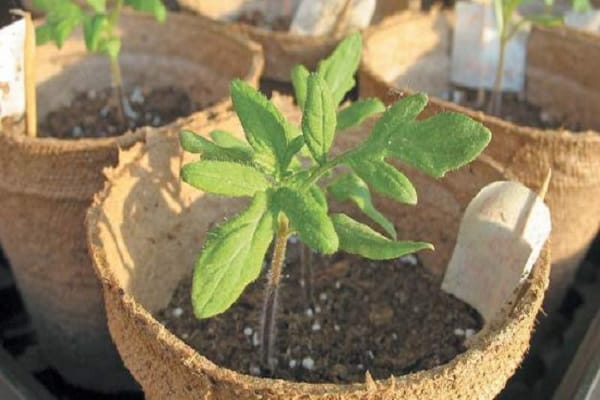
In block containers, make sure that roots do not grow into adjacent compartments. Single peat pots with tomato seedlings are wrapped in dark plastic wrap. This helps to prevent drying out of the earth, prevents the crystallization of water salts under the influence of the sun, which poses a danger to the roots.
Tomato seedlings dived into peat pots are placed on a pallet, at a short distance from each other. Crowding will interfere with normal air exchange and aeration of the seedlings.

Seedling care and hardening
Seedlings of tomatoes in peat pots are dived in order to provide a larger area of nutrition. Overgrowing tomatoes, in this way, are delayed in development. Growth can also be stopped by hardening.
With the appearance of the second pair of leaves, the seedlings are kept for 2.5 weeks at temperatures:
- daytime + 18 ... + 20 ° C;
- night + 8 ... + 10 ° C.
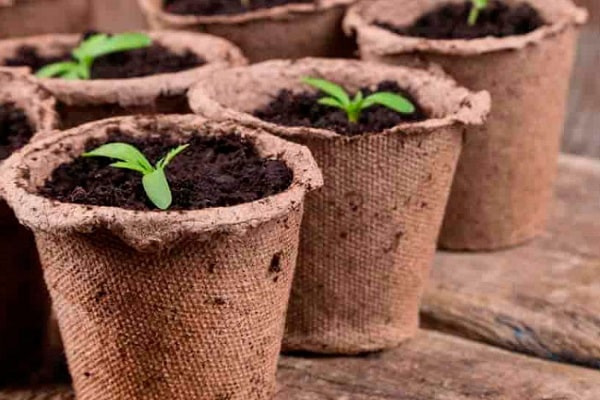
Then they return to the modes: + 14 ... + 16 ° C at night and + 20 ... + 22 ° C during the day. A few days before the transfer, they are put out on the street for the whole night. Hardened seedlings have short internodes, strong pubescent stem, bluish-green foliage. You can plant such plants in the ridges 10 days earlier than usual.
Sowing tomatoes one at a time in a volume of 0.5 ml is impractical:
- the container takes up extra space;
- more time is required for leaving.
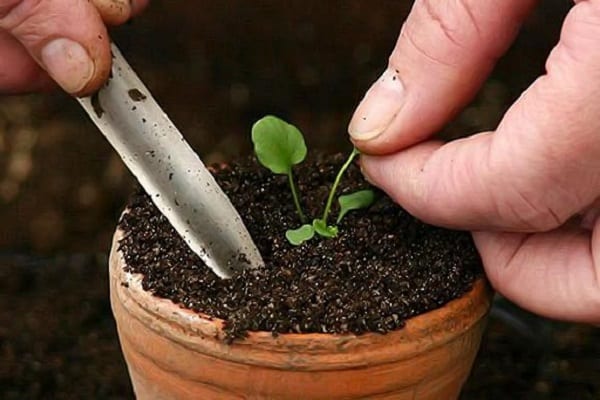
Tomatoes, unlike peppers and pumpkin seeds, tolerate picking easily. After a few days, the seedlings start growing together. 7-10 days after the procedure, tomatoes in peat pots are fed with a liquid solution of mineral fertilizers.
Crops grown in pots require frequent but low watering. Peat retains and retains moisture well, so they do it as carefully as possible. This method will help to avoid the appearance of mold and mildew. Bottom watering is convenient when the planting containers are temporarily placed in a tray with warm water.
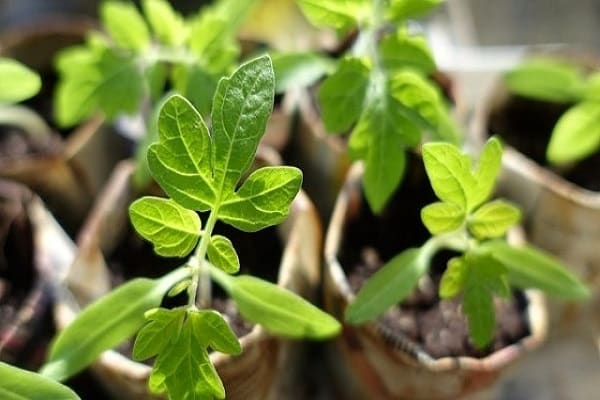
Outdoor transplant
The grown tomato seedlings in peat pots are transplanted to a permanent place along with the container. Before planting tomatoes, the cups are poured abundantly with water. For the prevention of viral diseases, plants are sprayed with 1% Bordeaux liquid dilution.
Peat cups are deepened completely, sprinkling with soil by 2 cm. The soil in the near-stem circle is watered and mulched. Over the next few days, planting is closely monitored. A slight drying out of the soil layers will cause the walls of non-decomposed containers to “wood”. An advanced crop with a lot of leaves will end up in a confined space.
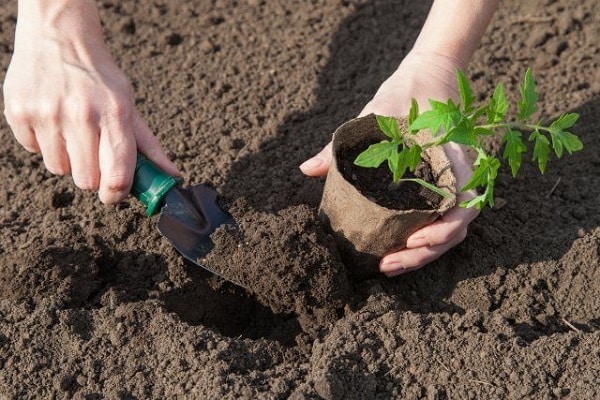
For easier root penetration, the bottom of the containers is carefully cut off. The walls can be cut or drilled with a sharp tool, but not completely removed. In the future, crops are watered strictly at the root, combining irrigation with the introduction of liquid fertilizers.
Healthy tomato seedlings in peat pots can be done by anyone, even a novice gardener.
